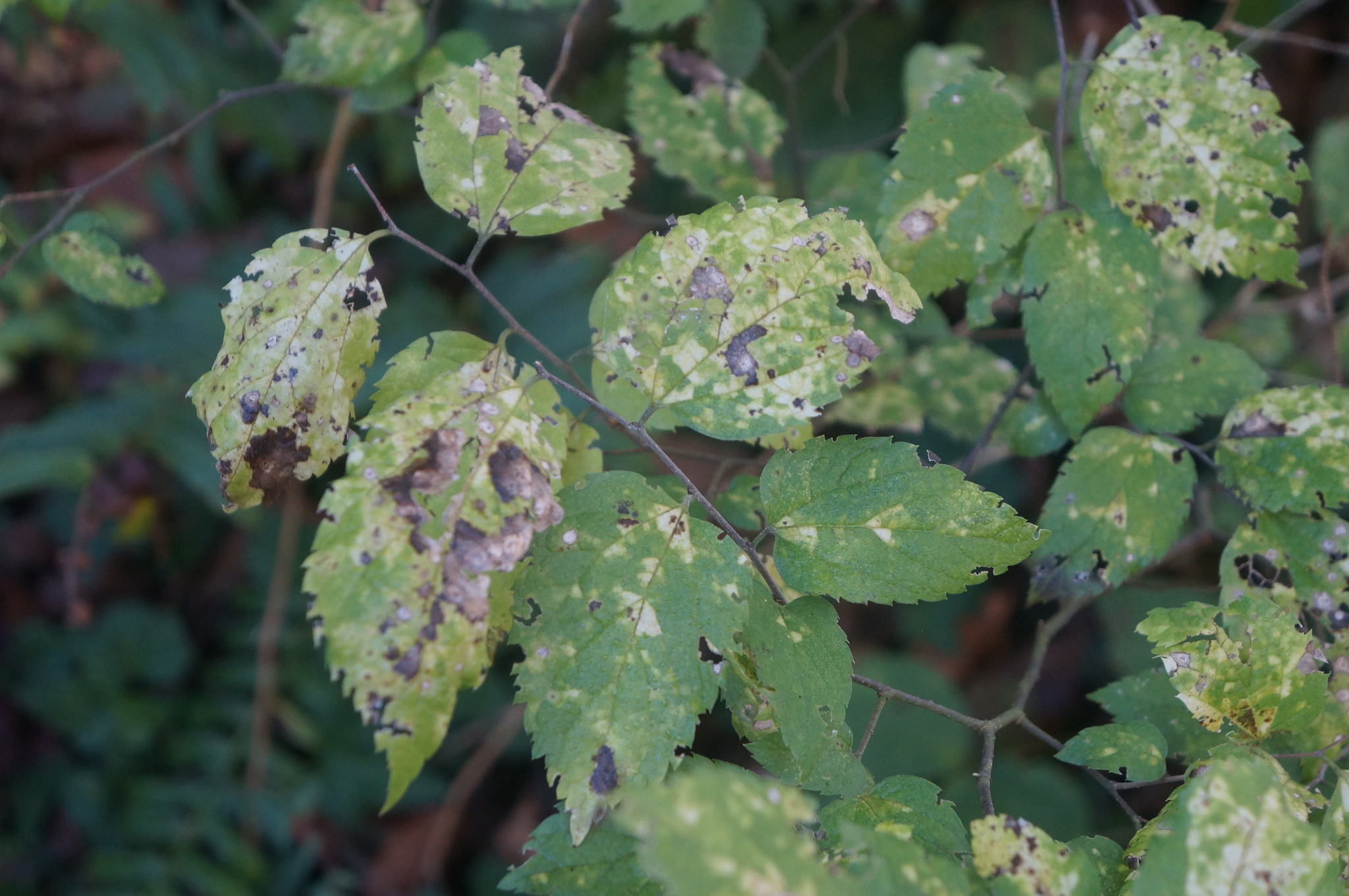Map Snapshot



2 Records
Status
Ampeloviruses are microscopic. Observations without molecular confirmation are speculative. It appears that the name Hackberry Mosaic Virus has not yet been accepted by the International Committee on Taxonomy of Viruses (ICTV) and should be considered provisional.
Description
Hackberry Mosaic Virus causes yellowing (chlorosis) of the leaves of Celtis.
Seasonality Snapshot
Source: Wikipedia
| Ampelovirus | |
|---|---|
| Virus classification | |
| (unranked): | Virus |
| Realm: | Riboviria |
| Kingdom: | Orthornavirae |
| Phylum: | Kitrinoviricota |
| Class: | Alsuviricetes |
| Order: | Martellivirales |
| Family: | Closteroviridae |
| Genus: | Ampelovirus |
Ampelovirus is a genus of viruses, in the family Closteroviridae.[1] Plants serve as natural hosts. There are 13 species in this genus.[1] Diseases associated with this genus include: yellowing and necrosis, particularly affecting the phloem.[1][2][3]
Taxonomy
[edit]The following species are assigned to the genus:[3]
- Air potato ampelovirus 1
- Blackberry vein banding-associated virus
- Grapevine leafroll-associated virus 1
- Grapevine leafroll-associated virus 3
- Grapevine leafroll-associated virus 4
- Grapevine leafroll-associated virus 13
- Little cherry virus 2
- Pineapple mealybug wilt-associated virus 1
- Pineapple mealybug wilt-associated virus 2
- Pineapple mealybug wilt-associated virus 3
- Pistachio ampelovirus A
- Plum bark necrosis stem pitting-associated virus
- Yam asymptomatic virus 1
Structure
[edit]Viruses in the genus Ampelovirus are non-enveloped, with flexuous and Filamentous geometries. The diameter is around 10-13 nm, with a length of 1400-2200 nm. Genomes are linear, around 17.9kb in length. The genome codes for 13 proteins.[1][2]
| Genus | Structure | Symmetry | Capsid | Genomic arrangement | Genomic segmentation |
|---|---|---|---|---|---|
| Ampelovirus | Filamentous | Non-enveloped | Linear | Monopartite |
Life cycle
[edit]Viral replication is cytoplasmic. Entry into the host cell is achieved by penetration into the host cell. Replication follows the positive stranded RNA virus replication model. The virus exits the host cell by tubule-guided viral movement. Plants serve as the natural host. Transmission routes are mechanical.[1][2]
| Genus | Host details | Tissue tropism | Entry details | Release details | Replication site | Assembly site | Transmission |
|---|---|---|---|---|---|---|---|
| Ampelovirus | Plants | None | Viral movement; mechanical inoculation | Viral movement | Cytoplasm | Cytoplasm | Mechanical inoculation: insects |
References
[edit]- ^ a b c d e "ICTV Report Closteroviridae".
- ^ a b c "Viral Zone". ExPASy. Retrieved 15 June 2015.
- ^ a b "Virus Taxonomy: 2020 Release". International Committee on Taxonomy of Viruses (ICTV). March 2021. Retrieved 14 May 2021.
